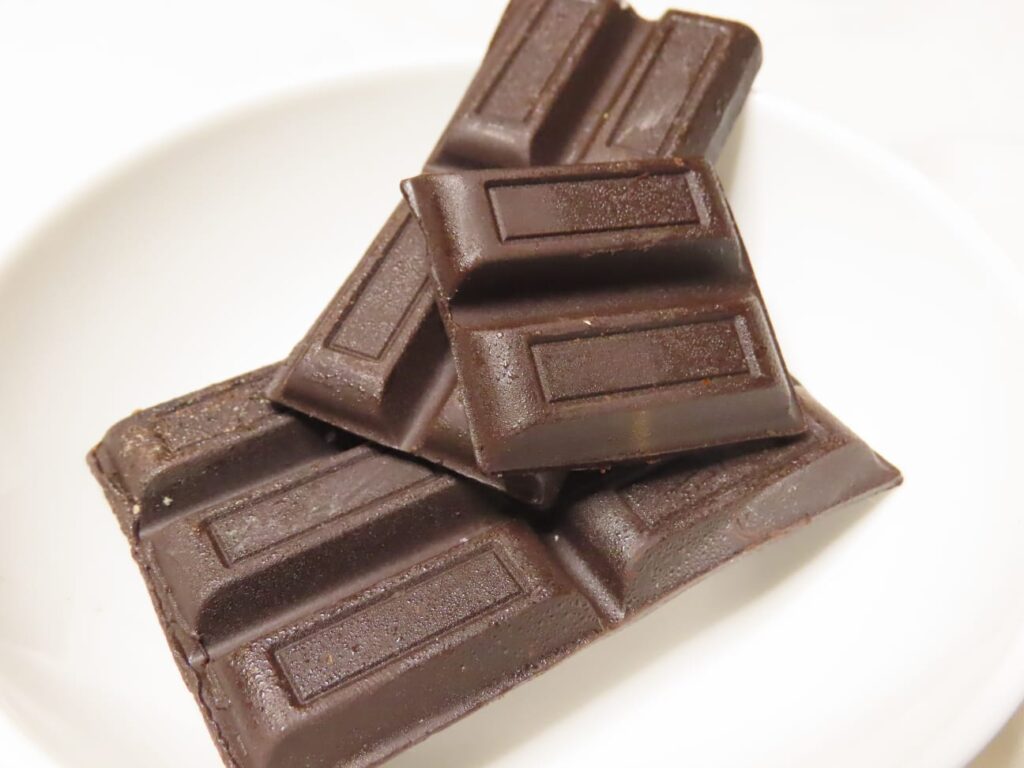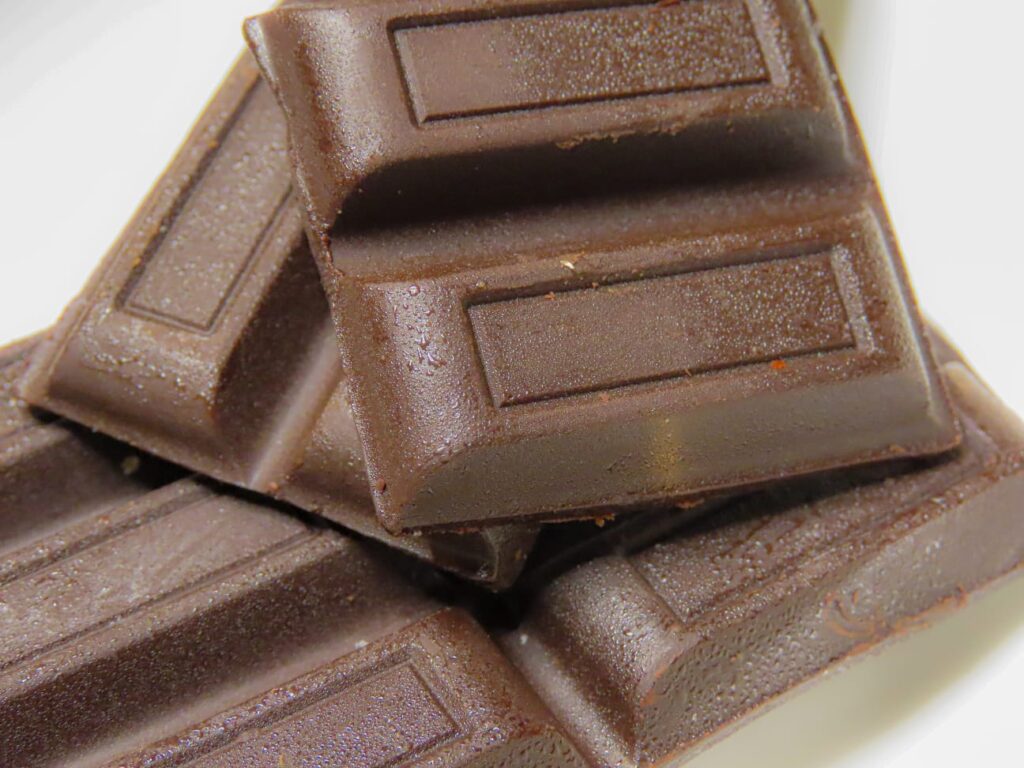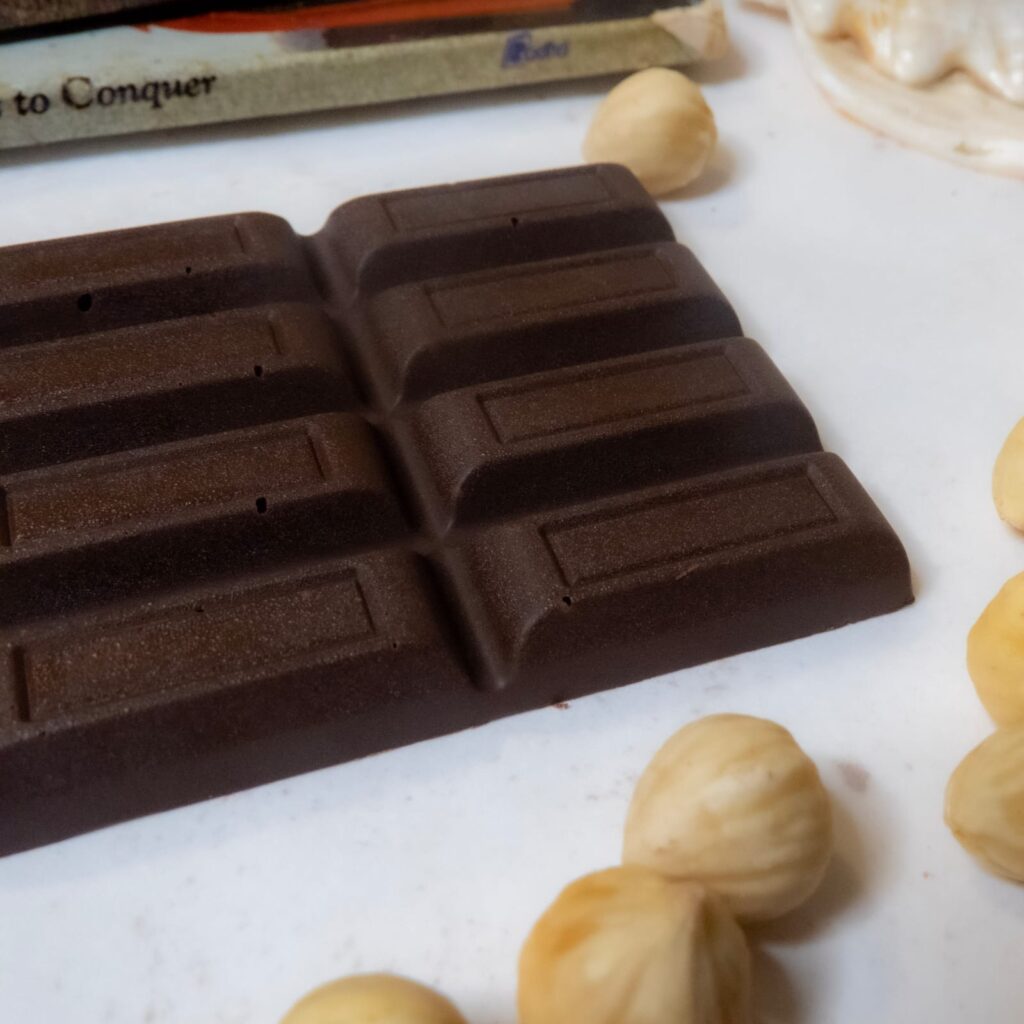In this article we shall explore the various terms of chocolate making process.
Harvesting
Cocoa beans grow on a tree called Theobroma cacao or simply called the cacao tree. Flowers grow on the trunk of the tree about 2 cm in diameter. The fruit also called pod grows to 30 cm in length. It changes colours from green, red or purple when raw to orange or yellow when ripe. Some variety remains green or yellow throughout. A way to check if the fruit is ripe is to shake it. If the seeds inside make a sound, the fruit is ripe. If you hear a liquid squishy sound, you need to throw away the fruit. Pods can ripen at different time, so there is always a multiple harvest. Pods are cut from trees using a long pole and curved knife at the end. Harvesting is a skilled job to cut just the pod at the right place so that the stem remains intact for growth of future flowers. Ripe pods are cut open in the middle to expose the seeds.
Fermenting
Seeds along with the pulp surrounding it are laid out in heaps for the fermenting to begin. It is carried out in wooden boxes with banana leaves. The boxes are perforated to allow the seeds to breathe as well as to drain the liquid generated during fermenting. Beans can take five to eight days to ferment. During this process they are turned and mixed at least once. The pulp surrounding the seed liquifies and starts disappearing. Once it is fully gone, fermenting is complete. This process is crucial for bringing the taste to the chocolate.
Drying
The excess moisture needs to be removed from the beans. Otherwise the seeds will get overdeveloped which will spoil them. Traditionally beans are dried in the open under the sun. Alternatively they can be burnt on fire which alters their taste. Either way this is the last step of the cacao farmers. After this the seeds are sorted and graded, packed in bags and shipped to chocolate maker around the world. The most important factor during transport is moisture control. Excess moisture enters storage spaces during shipping and increases levels of Free Fatty Acid. That can cause moulds to grow too. It can spoil the entire batch.
Cleaning
The next step moves from the cacao farms to chocolate makers kitchens or now factories. Beans are vacuum cleaned and separated from all farm impurities like pieces of wood, jute or dirt. The beans are graded weighed and stored for production. Cacao beans are purchased by chocolate makers, mostly across Europe and America. Historically chocolate maker would be picking up the stocks of cacao beans as soon as they were unloaded off the ships.
Roasting
Roasting kills off remaining moisture and bacteria which have formed during the shipping. Like in case of any bean or nut, roasting brings out the best flavour. Timing and temperature of roasting is important. Roasting changes the colour to dark brown and brings the special aroma.
Winnowing
During the roasting phase the external shells of beans becomes brittle. It can be cracked open to reveal the cocoa nibs inside. Nibs are edible and the purest form of chocolate. People have even begun consuming nibs directly to get the nutrition benefits. The shells are packed with anti oxidants and used to make herbal tea.
Cacao bean and cacao seeds are the same thing. Cacao pod is the one which grows on the tree. Once cut open it gives you the cocoa beans. Beans when cracked open gives you cacao nibs or nibs.
Grinding
The nibs are ground to a fine paste called cocoa mass. At this point the chocolate makers either extract all the cocoa butter from the cocoa mass to leave behind cocoa solids. Or some other ingredients like milk solids, sugar or vanilla are blended. Grinding also reduces the acid content further enhancing the flavour of chocolate. Pressing and heating releases the cocoa butter. Alternatively a chemical process can also do the same.
Conching
The word originates from the use of a stone shaped roller used as a mixer to evenly distribute cocoa particles among the other ingredients. Liquid chocolate blend is run through a roller grinder combo and is agitated with heated air. This process may go on till 96 hours. It helps remove final traces of moisture, further reduce the acidic content and greatly improves the texture of the chocolate making it smooth. Blended chocolates at this stage have their ingredients evenly distributed within the mass. In case of small chocolate crafters, modern machinery makes it possible to combine grinding and conching in a single machine called melangeur. As the blends are ready, they are poured into moulds or allowed to solidify and sold to chocolatiers.
Tempering
Enter the chocolatier – the first process. Tempering controls the size of the crystals to a uniform one so that the chocolate does not bloom. Untempered chocolate have t dull finish and crumble when broken like a cookie or biscuit. Tempering makes the chocolate shine like a glossy finish. It also makes the snap sound when broken. Tempering also contributes to the melt in the mouth experience at the same time retaining the shape of the chocolate bar throughout transportation. A tempered chocolate remains warmer at higher temperatures.
Moulding
It is a process of using a shaped container to designing your chocolate product in the various shapes you want. Chocolate moulds are made of rubber or hard plastic. It comes in various shapes and sizes, though the most common form is the bar chocolate. Molten chocolate is pour in the moulds either by hand or by machine. Moulds need to be cleaned, dried and polished each time before use. A slight tap is made to the mould to release any trapped air. Once the mass solidifies, it can pop out of the mould. A well tempered chocolate once solidified comes out of its mould easily.
Packaging
Packing up a chocolate is not just for its fancy market value. Chocolatiers go to great length to ensure the taste of their creation does not alter till it reaches into the hand of a chocolate lover. A hard case is used for bar chocolates to support it during transportation. Wrapping it in silver foil also ensure freshness. Finally the ingredients and usual nutrition values are printed on the box.



